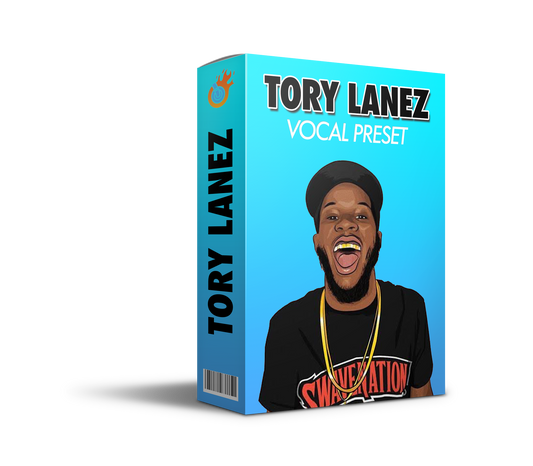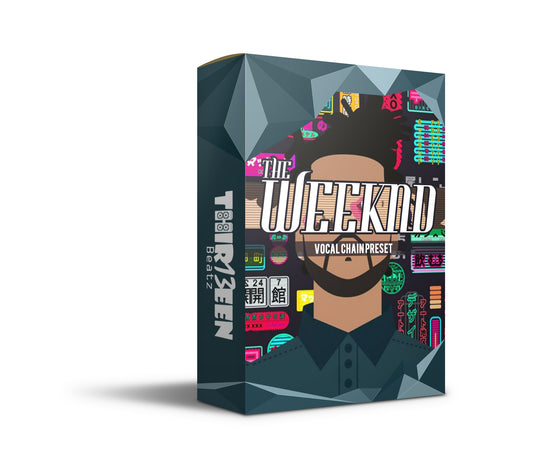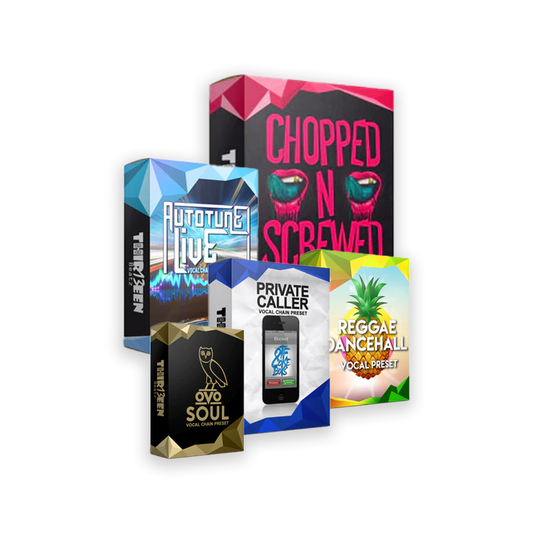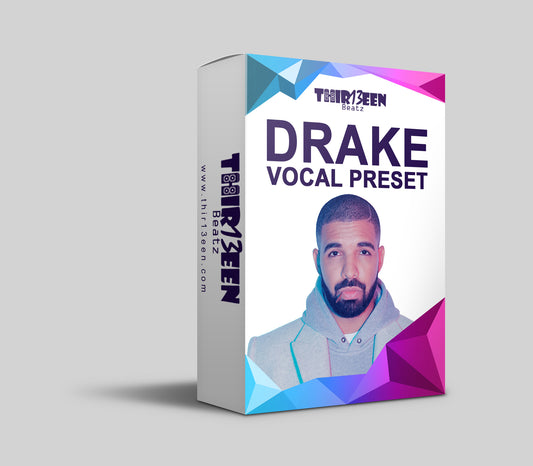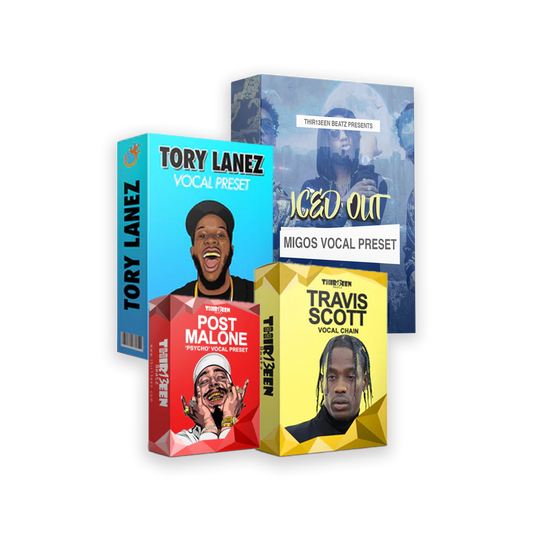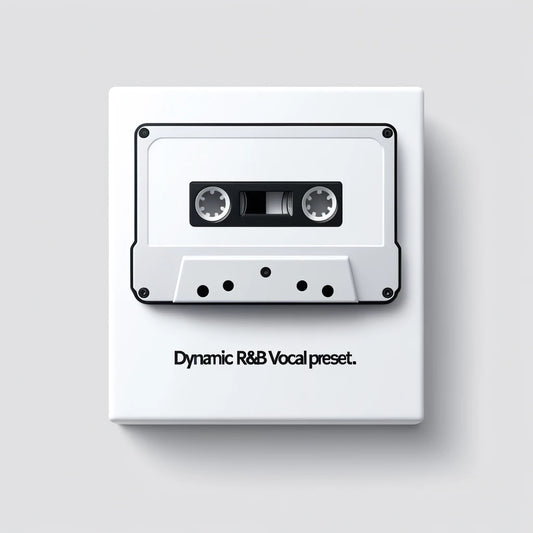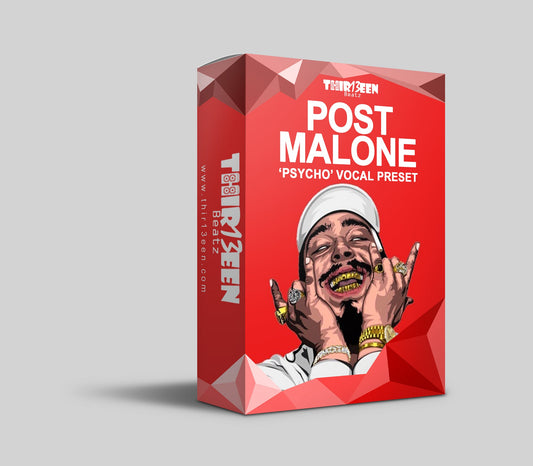Intro to Making a Hit Song
How to make a good song is not just about stringing chords and lyrics together; it's an art form that blends creativity with structure to resonate with listeners.
As a seasoned songwriter, I understand that successful songwriting involves mastering several key elements—melody, harmony, rhythm, and lyrics.
This guide offers a comprehensive look at these components and provides practical tips to help you craft your own hit songs.
In the following sections, we'll dive into the foundational aspects of creating a song that captures the essence of your musical vision.
We'll explore everything from determining the structure of your song, such as how long a verse should be, to fine-tuning the details like how long your finished track should run.
Additionally, we'll cover how to write lyrics to a beat and discuss the overall songwriting process, including how long it might take to write a song.
Whether you're a novice looking to write your first track or a seasoned musician seeking to polish your skills, this guide will provide valuable insights to enhance your songwriting journey.
How to Make a Good Song

Creating a good song starts with understanding the foundational elements that resonate with audiences: melody, harmony, and rhythm.
These three components are crucial in crafting a track that not only sounds good but also emotionally connects with listeners.
1. Melody: This is the tune of the song, the part that listeners often remember. A strong melody should be distinctive yet easy to follow.
When creating a melody, think about how it will interact with the lyrics and whether it enhances the song's overall emotional impact.
2. Harmony: Harmony supports the melody with chords and arrangements that add depth and complexity to the song.
It's about balancing chord progressions and ensuring they complement the melody. Experiment with different chords to see how they affect the mood and feel of the track.
3. Rhythm: The rhythm should work seamlessly with the melody and harmony, driving the song forward and keeping it engaging. Consider the tempo and how it influences the energy and flow of the song.
Rhythms can vary significantly across different sections to maintain listener interest and dynamics.
Integrating these elements effectively involves a lot of trial and error. Play around with different melodies, harmonies, and rhythms to see what feels right for the song you're aiming to create.
The integration of these elements should feel natural and enhance the song's ability to communicate its intended message or emotion.
Also Read: The Best Mic for Recording Vocals
Determining the Structure of a Song

Understanding song structure is key to crafting music that flows well and maintains listener interest.
Common song structures typically include verses, choruses, and sometimes a bridge, each serving a unique purpose in building the song's narrative and emotional impact.
Common Song Structures:
- Verse: The verse develops the story or theme of the song. It’s where listeners get new information and details about the emotions or situations being expressed.
- Chorus: The chorus acts as the song’s centerpiece, both musically and lyrically. It’s repeated several times throughout and is meant to be memorable and catchy, often encapsulating the main message of the song.
- Bridge: The bridge provides a contrast to the verse and chorus, offering a departure in terms of chords, melody, or perspective. It’s used to break up the repetition and build toward a climactic return to the chorus.
How Long is a Verse in a Song?

The length of a verse can vary significantly depending on the genre and the song's overall structure. Typically, a verse might last anywhere from 16 to 32 bars, but this is flexible. For example:
- In pop songs, verses usually are concise, around 16 bars, to keep the song moving swiftly towards the chorus.
- In hip-hop, verses can be longer, up to 32 bars or more, allowing more space for lyrical expression.
The length of a verse should serve the song's pacing and emotional journey.
In some genres, like ballads, longer verses help to tell a more detailed story or create a deeper emotional connection, while in faster-paced tracks like pop or dance, shorter verses help maintain energy and momentum.
Adjusting the length of your verses can dramatically affect how your song impacts the listener, making it a critical component of songwriting to master.
How Long Should a Song Be?

Deciding on the optimal length for a song often depends on several factors, including the format, distribution platform, and current trends in music genres.
Understanding these elements can help you tailor your music to better reach and engage your audience.
Optimal Song Length for Different Formats and Platforms
- Streaming Services: Songs on platforms like Spotify or Apple Music often benefit from being shorter. Tracks around 3 to 3.5 minutes long tend to perform better because they fit within the typical listener's attention span and playlist formats.
- Radio Play: Radio-friendly songs are usually between 3 and 4 minutes. This length aligns with the format's need for frequent ad breaks and listener engagement.
- Club Tracks: In dance genres, longer tracks (ranging from 4 to 7 minutes) are common to maintain the energy on the dance floor and provide DJs space to mix.
Factors Influencing Song Length Decisions
- Genre Trends: Different musical styles can dictate song length. For example, progressive rock or classical compositions often exceed typical pop song lengths, embracing complex developments and extended instrumental sections.
- Audience Attention Spans: With the proliferation of digital media, listeners' attention spans are generally shorter. This has influenced pop and hip-hop genres to produce shorter, more hook-focused songs that grab and retain listener attention quickly.
- Artistic Intent: The story or message you wish to convey can also impact song length. A more complex narrative might require a longer song to be fully expressed, while a simple, catchy tune might need only a brief runtime to make its point.
By considering these factors, songwriters can make informed decisions about song length that not only cater to their artistic expression but also optimize the song’s appeal and suitability for its intended audience and distribution channel.
Also Read: How to Sing Like Chris Brown
The Songwriting Process: How Long Does It Take to Write a Song?
The songwriting process can vary widely from one artist to another, with some songs taking just a few hours to put together, while others may evolve over months or even years.
The time it takes to write a song often depends on numerous factors, including the songwriter's experience, the complexity of the song, and external pressures such as deadlines.
Average Time Frames for Different Stages of Songwriting
- Conceptualization: This initial stage involves brainstorming ideas for the song, such as the theme, lyrics, or melody. This can take anywhere from a few minutes to several days.
- Writing Lyrics: Crafting the words to fit the melody or rhythm can take several hours for a basic draft, but refining them to get the right emotion and flow might require days or weeks.
- Composing Music: Developing the melody, chord progression, and rhythm section can be done in a few hours for experienced musicians, but tweaking and perfecting the composition might extend this stage.
- Arrangement and Production: Arranging the song structure and recording a demo could take from a few days to several weeks, especially if involving other musicians or producers.
Case Studies from Well-Known Songwriters
Ed Sheeran often talks about writing songs relatively quickly. For instance, he wrote "The A Team" in just under 20 minutes. His ability to rapidly create music that resonates with a wide audience is a testament to his proficiency and instinctual grasp of songcraft.
Adele shared that her hit "Hello" took six months to write. This longer process was due to her desire to perfect the song’s emotional depth and ensure the music and lyrics aligned perfectly with her artistic vision.
These anecdotes illustrate that there is no "one size fits all" in songwriting. Some artists can produce hits in a matter of hours, while others need more time to refine their work.
Ultimately, the best approach is the one that results in a song that the writer feels truly represents their intention and connects with their audience.
How to Write Lyrics to a Beat

Writing lyrics to a pre-existing beat presents unique challenges and opportunities.
The beat provides a rhythmic structure that can inspire and shape the lyrical flow, but it also imposes constraints that must be skillfully navigated. Here are some techniques and considerations for seamlessly integrating lyrics with beats.
Techniques for Fitting Lyrics to a Beat
- Listen and Feel the Beat: Before writing, immerse yourself in the beat. Listen to it repeatedly to understand its groove, tempo, and mood. This will help you tailor your lyrics to complement the beat’s characteristics.
- Match Rhythm and Meter: Pay close attention to the beat's rhythm and structure. Your lyrics should match the rhythmic patterns and meter to ensure they flow naturally with the beat. Experiment with different syllabic emphases to see what fits best rhythmically.
- Use Scatting: Vocalize rhythmically with the beat using nonsensical syllables (scatting) to find natural melodic and rhythmic patterns. Once you have a pattern that feels good, replace the nonsensical syllables with actual words.
- Draft and Revise: Start by drafting your lyrics loosely, then refine them to better match the beat. Adjust syllable count, word choices, and phrasing to tighten the sync between your lyrics and the beat.
Importance of Rhythm, Meter, and Phrasing
- Rhythm: The rhythm of your lyrics needs to be in sync with the beat to maintain the song’s flow and energy. Misaligned rhythms can make the lyrics feel out of place and disrupt the song's groove.
- Meter: Meter refers to the pattern of stressed and unstressed syllables in your lyrics. A consistent meter can help maintain musicality and make the lyrics easier to memorize and sing along to.
- Phrasing: Effective phrasing is crucial for making lyrics feel intentional and impactful. Good phrasing takes advantage of the beat’s natural breaks and accents, enhancing both the lyrical impact and the overall musical expression.
Writing lyrics to a beat is much like dancing to music; you need to be in tune with the rhythm and feel of the music to move in harmony with it.
By focusing on these elements, you can create lyrics that not only fit the beat but also enhance the emotional and rhythmic impact of the song.
Also Read: How to Write Rap Lyrics
Writing Memorable Lyrics
Writing memorable lyrics that resonate with listeners involves a combination of creativity, technical skill, and a deep understanding of human emotion.
Here are some techniques to help you craft lyrics that not only stick with your audience but also elevate your songwriting.
Techniques for Crafting Memorable Lyrics
- Tell a Story: People connect with stories. Structure your lyrics to narrate a clear, compelling story or convey a strong, relatable emotion. This can make your song more engaging and memorable.
- Use Concrete Images and Sensory Details: Lyrics that paint vivid pictures or evoke specific sensations can be more impactful than abstract concepts, helping listeners visualize and feel the song’s narrative or mood.
- Keep it Simple and Relatable: While rich, complex lyrics have their place, simplicity often resonates more broadly. Use everyday language to express feelings and ideas that are universally understandable.
Using Literary Devices
- Metaphor: Metaphors compare two unrelated things to highlight their similarities, adding depth and new perspectives to your lyrics. For example, saying "love is a battlefield" provides a vivid image of love as something fraught with conflict.
- Alliteration and Assonance: These sound devices enhance the musicality of your lyrics. Alliteration (repetition of consonant sounds) and assonance (repetition of vowel sounds) can make phrases more catchy and pleasing to the ear, as in "She sells seashells by the seashore."
- Rhyme: Rhyme schemes can help structure your song and make it more memorable. Experiment with different schemes to see what best complements your song's rhythm and mood.
Writing memorable lyrics is an iterative process that blends art with meticulous crafting.
By focusing on storytelling, utilizing literary techniques, and embracing feedback and revisions, you can create lyrics that not only stick with your audience but also stand the test of time.
Incorporating Feedback and Revision
Incorporating feedback and revision into your songwriting process is essential for crafting a polished and impactful song.
Effective use of feedback can significantly enhance the quality of your music, ensuring it resonates well with your intended audience.
Here’s how to effectively use feedback to refine your song and some tips for revising lyrics, melodies, and overall song structure.
How to Effectively Use Feedback
Choose Your Critics Wisely: Obtain feedback from trusted sources who understand your musical style and goals. This could be fellow musicians, songwriters, or a mentor. Their insights are likely to be more constructive and aligned with your artistic vision.
Be Open and Receptive: It's important to be open to criticism without taking it personally. View feedback as a valuable tool for growth, not as a negative judgment.
Analyze Feedback: Look for common themes in the feedback you receive. If multiple people point out the same issue, it’s a strong indicator that particular aspect of your song may need adjustment.
Prioritize Changes: Not all feedback will be equally relevant. Decide which suggestions align best with your vision for the song and prioritize those changes.
Tips for Revising Lyrics, Melodies, and Song Structure
Lyrics: If feedback suggests that your lyrics are unclear or not impactful, consider simplifying complex ideas or enhancing the emotional expression. Play around with word choices, metaphors, and phrasing to improve clarity and engagement.
Melodies: For melodies that aren’t resonating, try altering the rhythm or pitch patterns. Sometimes, even slight modifications can make a melody more memorable or emotionally powerful.
Song Structure: Feedback might indicate issues with pacing or flow. Experiment with rearranging sections of your song—perhaps the bridge needs to come earlier, or the chorus could be repeated more frequently. Adjusting the structure can significantly impact the song's dynamic and emotional journey.
Implementing Changes and Re-Evaluation
Make Adjustments: Implement the prioritized changes based on the feedback. This might involve re-writing parts of the song, tweaking the melody, or restructuring the entire piece.
Test Changes: After making adjustments, test how the changes work within the song. Sometimes what seems like a good idea during revision may not pan out as expected in practice.
Seek Additional Feedback: Once revisions are made, get more feedback to see if the changes have improved the song. This iterative process can continue until the song feels complete and polished.
Incorporating feedback and revising your work are crucial steps in the songwriting process. They ensure that your final product is well-crafted and ready to make a strong impact on your listeners.
Recording Your Song: From Concept to Studio

Recording your song and transitioning from concept to a polished studio version is an exciting step in the songwriting process.
Here are some essential tips for home recording and advice on when and how to collaborate with producers and studio technicians to elevate your music.
Basic Home Recording Tips for Songwriters
Invest in Basic Equipment: Start with a good quality microphone, headphones, and an audio interface. These tools are fundamental for capturing clear sound and monitoring your recordings.
Use a DAW: Digital Audio Workstation (DAW) software is essential for recording, editing, and mixing your tracks. Popular choices include Ableton Live, Pro Tools, and Logic Pro. Many DAWs come with built-in tutorials to help you get started.
Create a Suitable Recording Environment: Minimize background noise and echo by recording in a quiet, carpeted room, or use acoustic panels to improve sound quality.
Experiment with Mic Placement: Different microphone placements can dramatically affect how your recordings sound. Experiment to find the best position for your vocals or instruments.
Keep It Simple: Initially, focus on capturing a clean, simple recording of your song. You can always add effects and additional layers later.
When and How to Collaborate with Producers and Studio Technicians
When to Collaborate: Consider collaborating once you have a strong demo version of your song that communicates its potential. A producer can help refine your vision and elevate the production quality to professional standards.
Choosing the Right Producer: Look for a producer whose style and expertise align with your musical genre and goals. Review their previous work to ensure they have experience with your type of music.
Preparation: Before entering the studio, prepare as much as possible. Know your song inside out, including lyrics, chords, and structure. This will save time and money in the studio.
Communication is Key: Clearly communicate your vision and expectations with your producer and technicians. Be open to their suggestions, but also assertive about your artistic preferences.
Learn from the Experience: Working in a professional setting is a learning opportunity. Pay attention to the techniques used by the producer and technicians, ask questions, and gain insights that you can apply to future projects.
Collaborating with experienced professionals can bring new dimensions to your music and ensure your song reaches its fullest potential.
Whether you’re laying down initial tracks at home or entering a studio to finalize your song, each step is integral to bringing your musical vision to life.
Keep Reading: Is DistroKid Worth It?
Conclusion to Making a Good Song
Good songwriting is rooted in understanding the key elements of melody, harmony, rhythm, and engaging lyrics.
These components must be skillfully woven together to create a song that resonates with listeners.
Remember, crafting a song involves much more than just fitting words to music; it's about conveying emotions, telling stories, and connecting with your audience on a deeper level.
The songwriting journey involves continuous learning, experimenting, and refining.
I encourage you to embrace the creative process and experiment with different styles and techniques to find your unique voice in music.
Whether you're adjusting lyrics, tweaking melodies, or experimenting with song structures, each step is a chance to enhance your skills and express yourself. Don't be afraid to take risks and try new approaches.
Your distinctive sound and style will evolve as you continue to explore and push the boundaries of your musical creativity.


